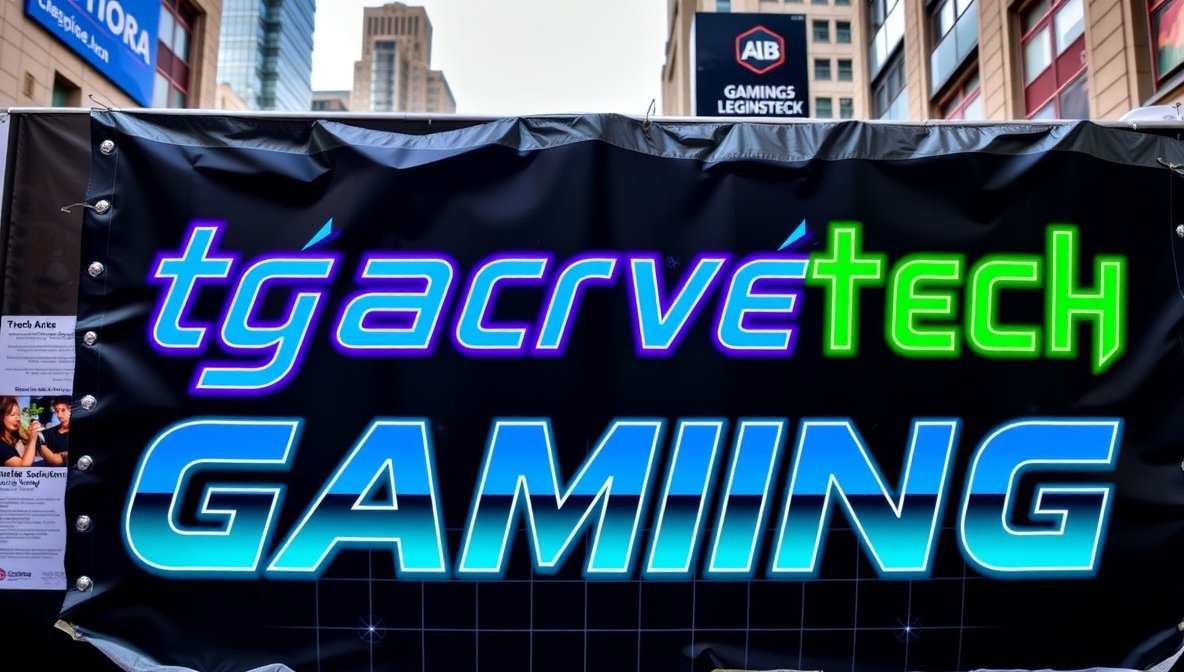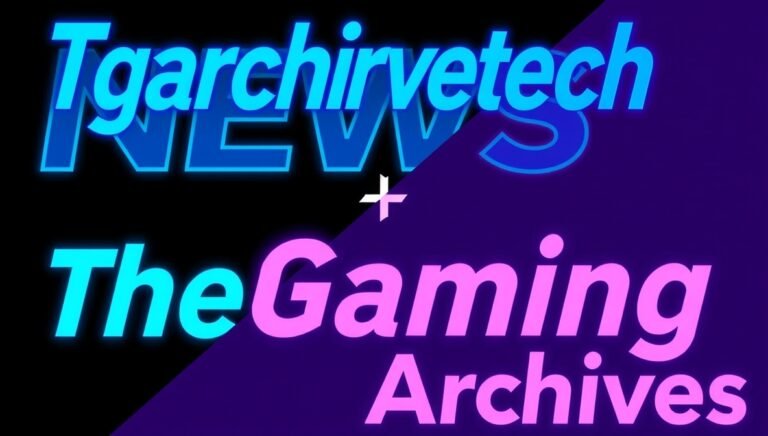tgarchirvetech gaming – Evolution, Technology, and Future of Interactive Entertainment
tgarchirvetech gaming represents the continuous transformation of digital entertainment through innovation, imagination, and interactivity. In a world driven by technology and creativity, gaming has become more than just a leisure activity—it is a global phenomenon shaping culture, communication, and even economies. From arcade machines of the past to virtual reality headsets of today, the gaming landscape has expanded into a multibillion-dollar industry. This evolution is powered by constant innovation in software, hardware, and storytelling, with each generation redefining what it means to play.
Gaming began humbly in the early 1970s, with pixelated screens and limited sound effects. Yet, even then, the spark of creativity was evident. As personal computers and consoles advanced, developers pushed the limits of what these machines could do. The 1990s saw a boom in 3D graphics and immersive storylines. Fast forward to the 2020s, and gamers can explore hyper-realistic worlds, connect with millions globally, and even make a career out of gaming. This rapid advancement showcases how technology and art merge seamlessly to create experiences that transcend mere entertainment.
The Rise of Immersive Gameplay
One of the most defining characteristics of modern gaming is immersion. tgarchirvetech gaming is at the forefront of this transformation, integrating high-definition visuals, powerful processors, and lifelike physics engines to produce near-cinematic experiences. Players today don’t just control characters—they inhabit them. Whether it’s navigating a sprawling fantasy realm, battling across galaxies, or simulating real-life professions, the level of detail and realism has reached extraordinary heights.
This evolution wouldn’t have been possible without advancements in graphics cards and display technologies. Developers now work with ultra-fast GPUs that render complex scenes at high frame rates, ensuring smooth gameplay even during intense sequences. Furthermore, technologies like ray tracing replicate real-world lighting effects, adding a sense of authenticity never seen before. Combined with surround sound systems and haptic feedback controllers, the player becomes fully immersed—feeling every explosion, hearing every whisper, and seeing every subtle reflection in the environment.
Beyond visuals, storytelling plays a major role in deepening player engagement. Games today rival blockbuster films in narrative quality. Characters have emotional depth, motivations, and backstories that resonate with players. This synergy of technology and narrative creates unforgettable experiences that keep players invested for hours or even years.
The Impact of Cloud and Mobile Gaming
As connectivity improves globally, the way people access games continues to change. tgarchirvetech gaming explores how cloud technology has revolutionized accessibility. Instead of relying solely on expensive hardware, players can now stream games directly from remote servers. This shift reduces the need for constant hardware upgrades and allows users to play from virtually any device with a stable internet connection.
Mobile gaming has further expanded the audience base. What began as casual entertainment on smartphones has now evolved into competitive eSports platforms. Popular titles attract millions of players daily, proving that gaming isn’t restricted to high-end consoles or PCs. Accessibility has become the driving force behind the industry’s explosive growth.
The cloud has also transformed multiplayer gaming. Seamless updates, cross-platform integration, and real-time synchronization have eliminated traditional barriers. Gamers from different devices and countries can now join the same matches without compatibility issues. This interconnected ecosystem has fostered stronger communities and more inclusive gaming experiences.

Virtual Reality and Augmented Experiences
The next frontier in interactive entertainment is undoubtedly virtual reality (VR). tgarchirvetech gaming leverages the power of VR and AR to blur the lines between the digital and physical worlds. With a simple headset, users can now step into entirely new dimensions, exploring environments that react to their every move. Unlike traditional gaming, VR places the player inside the experience, turning passive observation into active participation.
Augmented reality (AR) complements this evolution by overlaying digital elements onto the real world. Games like Pokémon GO demonstrated how AR can turn everyday spaces into playgrounds of imagination. Businesses are also adopting these technologies for training simulations, education, and marketing. The versatility of VR and AR continues to expand, and as devices become more affordable, adoption rates will soar. tgarchirvetech news by thegamingarchives
While early VR systems faced criticism for motion sickness and limited content, modern advancements have addressed these challenges. Improved sensors, wider fields of view, and higher frame rates now deliver more comfortable and realistic experiences. Developers are also experimenting with haptic suits and motion-tracking gloves to further enhance immersion. The future holds endless possibilities as the boundaries between reality and simulation continue to fade.
The Role of Artificial Intelligence
Artificial intelligence (AI) is transforming every industry, and gaming is no exception. tgarchirvetech gaming integrates AI to enhance player experiences, create smarter opponents, and generate dynamic worlds. Unlike scripted behaviors of the past, today’s AI-driven games can adapt to player decisions in real-time, making every playthrough unique.
AI also powers content generation, reducing development time and costs. From designing landscapes to populating virtual cities with realistic non-playable characters (NPCs), algorithms now assist developers in creating rich, expansive environments. Machine learning further allows games to analyze player behavior and adjust difficulty levels or suggest strategies accordingly.
Moreover, AI-driven personalization ensures that each player’s experience feels tailored. For example, storylines might shift based on moral choices, or certain in-game events may unfold differently depending on the user’s past actions. This dynamic storytelling deepens emotional investment and replayability, keeping players engaged long after the first playthrough.
Gaming as a Cultural Force
Gaming has transcended its role as mere entertainment—it’s now a cultural and social powerhouse. tgarchirvetech gaming highlights how communities around the world are formed through shared experiences and online collaboration. From multiplayer guilds to content creators and streamers, gaming unites people across age, gender, and geography.
In countries like Japan and South Korea, gaming culture is deeply embedded in daily life. Meanwhile, in the United States, eSports events fill stadiums with cheering fans, mirroring the excitement once reserved for traditional sports. Professional gamers are now celebrated athletes, earning sponsorships, salaries, and fan followings that rival mainstream celebrities.
Beyond competition, gaming also serves as a platform for artistic expression and storytelling. Developers, writers, and designers collaborate to craft emotionally powerful narratives. Independent studios, in particular, have been instrumental in pushing creative boundaries—exploring topics like mental health, identity, and social justice through interactive media.
The Business of Gaming
The global gaming industry is among the fastest-growing markets in entertainment. tgarchirvetech gaming examines how this economic powerhouse generates billions in annual revenue, surpassing film and music combined. Major studios invest heavily in research, development, and marketing, recognizing the immense profit potential.
Microtransactions, downloadable content (DLC), and subscription-based models have become integral to modern gaming. While some criticize these systems for promoting excessive spending, they also allow developers to continuously update and expand their games post-release. This model supports sustainability and keeps the player base engaged through fresh content and seasonal events.
The rise of indie developers has also democratized the industry. Digital distribution platforms enable small studios to reach global audiences without needing massive budgets. Crowdfunding platforms and community-driven initiatives empower creators to produce innovative games that resonate with niche audiences. This diversity ensures that gaming remains fresh, inclusive, and evolving.
eSports and Competitive Gaming
Competitive gaming, or eSports, has transformed from a niche hobby into a global spectacle. tgarchirvetech gaming explores the rise of professional leagues, million-dollar tournaments, and sponsorship deals. Games like League of Legends, Counter-Strike, and Dota 2 have cultivated massive fanbases, with international events streamed to millions online.
The structure of eSports mirrors that of traditional sports—complete with teams, coaches, analysts, and dedicated training facilities. Universities now offer scholarships for eSports athletes, recognizing their discipline and skill. The integration of analytics and strategy has turned gaming into a sophisticated form of competition where split-second decisions can determine victory.
As eSports continues to grow, it attracts brands seeking to engage younger audiences. Advertisers, broadcasters, and investors are pouring resources into the ecosystem, further legitimizing gaming as a mainstream sport. The sense of community, competition, and global recognition makes eSports one of the most influential cultural movements of the 21st century.
Education, Training, and Beyond
The applications of gaming extend far beyond entertainment. tgarchirvetech gaming emphasizes how interactive simulations are revolutionizing education, healthcare, and corporate training. By gamifying learning processes, educators can engage students in ways traditional methods cannot.
In medicine, virtual simulations train surgeons to practice complex procedures without risk. In corporate environments, gamified modules enhance employee training by making learning interactive and measurable. The military also utilizes realistic simulations for tactical and strategic planning.
Moreover, games that focus on problem-solving, creativity, and collaboration foster valuable cognitive skills. Studies show that gaming can improve hand-eye coordination, decision-making, and multitasking abilities. As educational institutions recognize these benefits, the stigma surrounding gaming continues to fade.
The Social and Psychological Dimensions
While gaming offers numerous benefits, it also presents challenges. tgarchirvetech gaming acknowledges the growing conversation around gaming addiction, mental health, and screen time. As games become more immersive, players can lose track of time, leading to negative physical or emotional effects if not balanced responsibly.
Developers are addressing these concerns by implementing features like playtime reminders, parental controls, and community guidelines to promote healthy habits. Additionally, research suggests that cooperative and narrative-driven games can foster empathy, teamwork, and resilience. The key lies in moderation and awareness.
Online toxicity and cyberbullying remain persistent issues. However, developers and communities are increasingly proactive in fostering positive spaces. Anti-harassment systems, AI moderation tools, and inclusive policies help create environments where players feel safe and respected. The evolution of gaming culture is as much about ethics and inclusivity as it is about technology.
The Future of Gaming Technology
Looking ahead, gaming’s potential seems limitless. tgarchirvetech gaming envisions a world where artificial intelligence, quantum computing, and biotechnology converge to create experiences once thought impossible. Imagine games that respond to your emotions, read neural signals, or evolve based on global events in real time.
The integration of blockchain and Web3 technologies may redefine digital ownership. Players could truly own in-game assets, trade them across platforms, or even earn income through virtual economies. As these systems mature, they could create a decentralized ecosystem where creativity and commerce coexist seamlessly.
Sustainability is another emerging focus. Developers and hardware manufacturers are adopting eco-friendly practices to reduce energy consumption and waste. Cloud-based systems, digital distribution, and recyclable materials are paving the way for a greener gaming industry.

The Power of Community and Connection
At its heart, gaming is about connection. tgarchirvetech gaming reminds us that behind every avatar and screen name is a real person seeking engagement, fun, and friendship. Online communities, forums, and social networks centered around gaming have become support systems for millions worldwide.
Streaming platforms like Twitch and YouTube Gaming have transformed players into entertainers and educators. Viewers not only watch gameplay but also learn strategies, share stories, and build lasting bonds. Gaming conventions, fan expos, and charity livestreams further highlight the communal spirit that drives this culture forward.
In many ways, gaming has become a reflection of society—a space where creativity, collaboration, and competition coexist. As technology continues to evolve, so will the ways we connect, play, and imagine.
Conclusion
The journey of gaming from pixelated beginnings to immersive virtual realities is a testament to human innovation. tgarchirvetech gaming encapsulates the endless pursuit of excellence that defines this ever-evolving industry. It bridges technology and art, competition and creativity, individual passion and collective experience.
As we look to the future, gaming will continue to shape how we learn, communicate, and experience the world. Whether it’s through AI-driven storytelling, cloud-based accessibility, or VR immersion, the possibilities are infinite. What was once seen as a pastime has now become a defining pillar of global culture—uniting generations, inspiring creativity, and pushing the limits of imagination.




